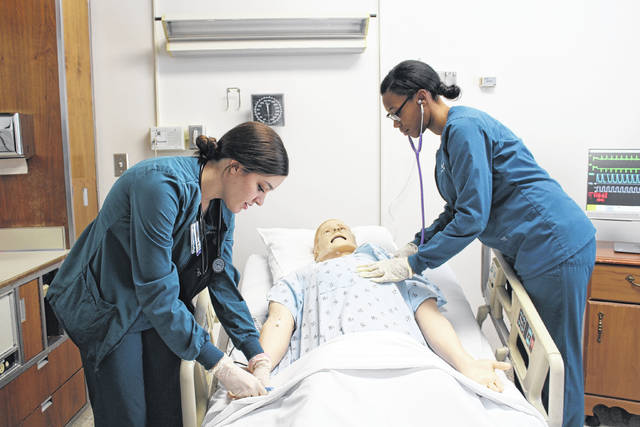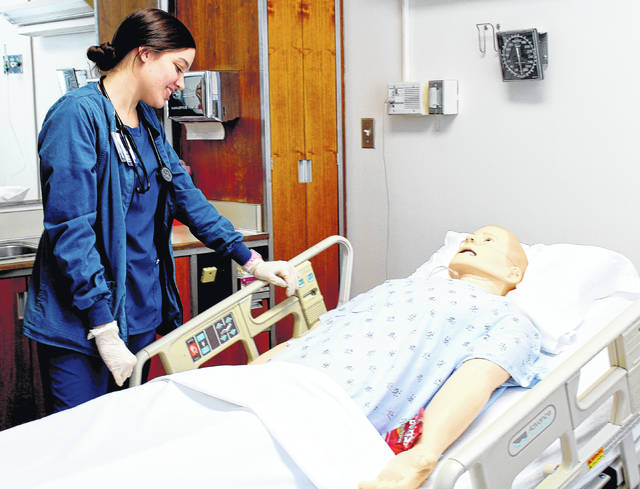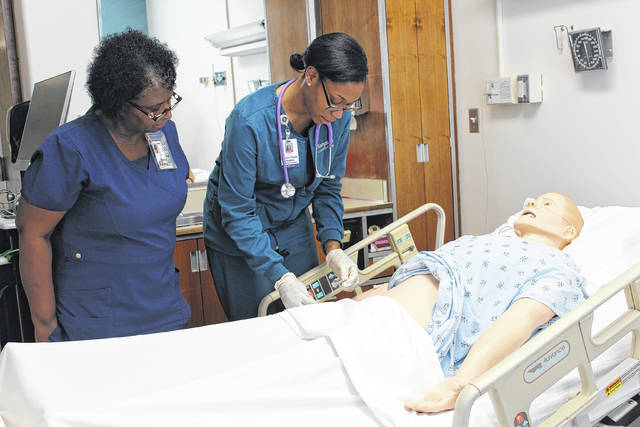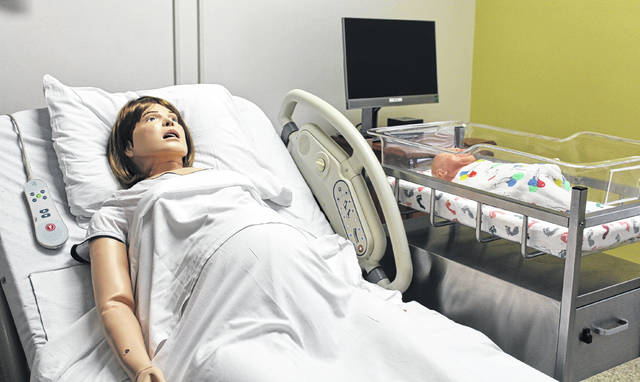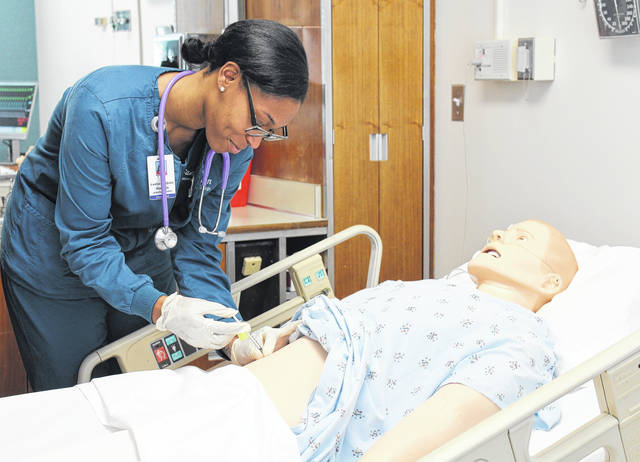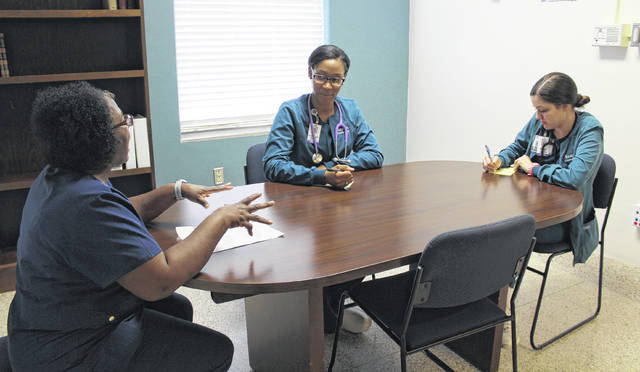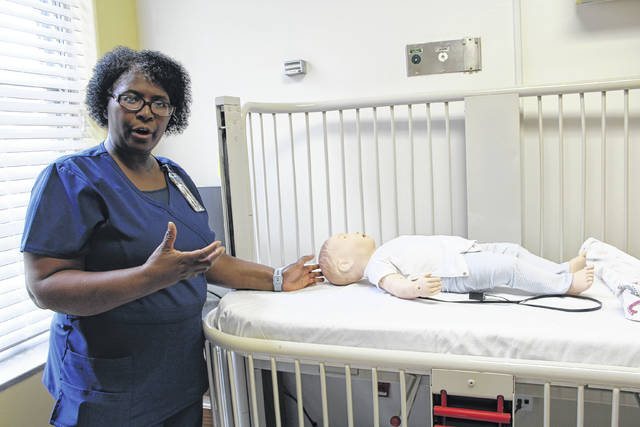Sampson Community College’s Simulation Center has received a boost as Sampson Regional Medical Center has upgraded its second floor to house the facility.
According to Lisa Turlington, dean of Advancement and executive director of the Foundation of Sampson Community College, the SCC Healthcare programs have needed space to grow and meet the demand for training for several years. SCC President Dr. Bill Starling had a thought to partner with SRMC and offer college programs in the hospital.
Anne Faircloth, vice president of the SCC Foundation and a SRMC Trustee, was able to connect the dots and move the project forward.
Simulation coordinator and instructor, Daphene Lane, is truly the hands behind the entire operation.
First, Lane takes the students to the briefing room where they are given information about the patient they are about to see. Once the students receive all the necessary information, they go and check on the simulation patient.
In one scenario, residents were informed that their patient was an 18-year-old boy whose mother had to step out, but was anxious to take him home so the staff was in charge of trying to get him discharged. Lane informed the students that the patient already had an IV, his blood sugar ranging from 200 to 300. The students were instructed to get the patient’s blood glucose reading, and that the patient’s catheter was taken out during the night.
With that, the students went to work, checking on the simulated patient and getting all of their necessary vitals.
After the students got a blood glucose reading, they were instructed to give insulin to the patient. Lane responded as the patient, manipulating vitals to simulate various situations in order to teach the students.
The mannequins can “code” (go into cardiopulmonary arrest), giving students an opportunity to learn in a safe environment how to treat a code situation. The students can de-fibrillate the patient if need be. The mannequins breathes, blinks, emits odors and coughs like a real person.
Trainees can practicing placing IVs, catheters and other tubes, as well as administer medicines to their simulated patients. Students have to think on their feet and react to the patient in a real-life scenario. The simulation coordinator can see whether students are responding the right way, and find different ways to test and assess their abilities, communication and critical thinking. Simulations go from simple to complex.
SCC has had a Simulation Center for 10 years but has needed to adapt recently and expand and SRMC has helped a lot with the process.
There are various mannequins in the simulation center. One is a standard patient that can be of any adult age. There are certain appendages the instructors have in order to change the sex of the patient so that students can learn how to put in a catheter for both male and female patients.
In one room, there was a pregnant mannequin who could deliver her baby up to the shoulders. She can also go through various complications to give the staff and students different scenarios from which to learn. There was also a baby mannequin in the same roomso that the mother could interact with the child and students could assess these interactions and look for signs pointing to issues such as postpartum depression.
In a third room, there was a child mannequin that could also range in age depending on what the situation needed. In the same room was a toddler mannequin also for pediatric lessons.
The simulations can help identify the strengths and weaknesses of the students and they can talk about them as they debrief. The debriefing portion is one of the most important parts of the lesson, assessing what went right and wrong in the exercise — all with the goal of learning and improving. Lane said imparting that knowledge is a key part of the lesson.
“It’s super helpful,” Madison Davis, a student at the college, expressed. “I can look back and see what I did.”
“The first time I worked with the mannequin, I was a nervous wreck,” LaShae Matthis, another student at the school added.
Both students are at a senior level and have high expectations for the future. They worked well through the test run with the mannequin at the simulation center.
According to Lane, the expansion of the center at the hospital means students can get a feel for a hospital setting, something that can serve to ease the transition for when they are medical professionals.
“It has been a pleasure working with SRMC to expand the simulation experiences that SCC offers students,” Turlington stated. “Our faculty is excited to train our future healthcare professionals in this new center.”
The college looked at the initial cost of the simulation equipment and it totaled over $300,000, which is when Turlington reached out to The Cannon Foundation. However, the college received a recent grant for another project which disqualified them from applying at the time they wanted to build the simulation center.
“I asked the hospital to consider applying for a grant to help defray costs and was pleased that they were willing to invest further in the partnership by applying for the grant and being awarded $82,000 for equipment,” Turlington said. “We negotiated the balance of equipment to just over $154,000 for the college, so we were able to realize a significant savings because of the partnership.”
The grand opening of the simulation center will occur at 4 p.m. this Wednesday, Feb. 19.
